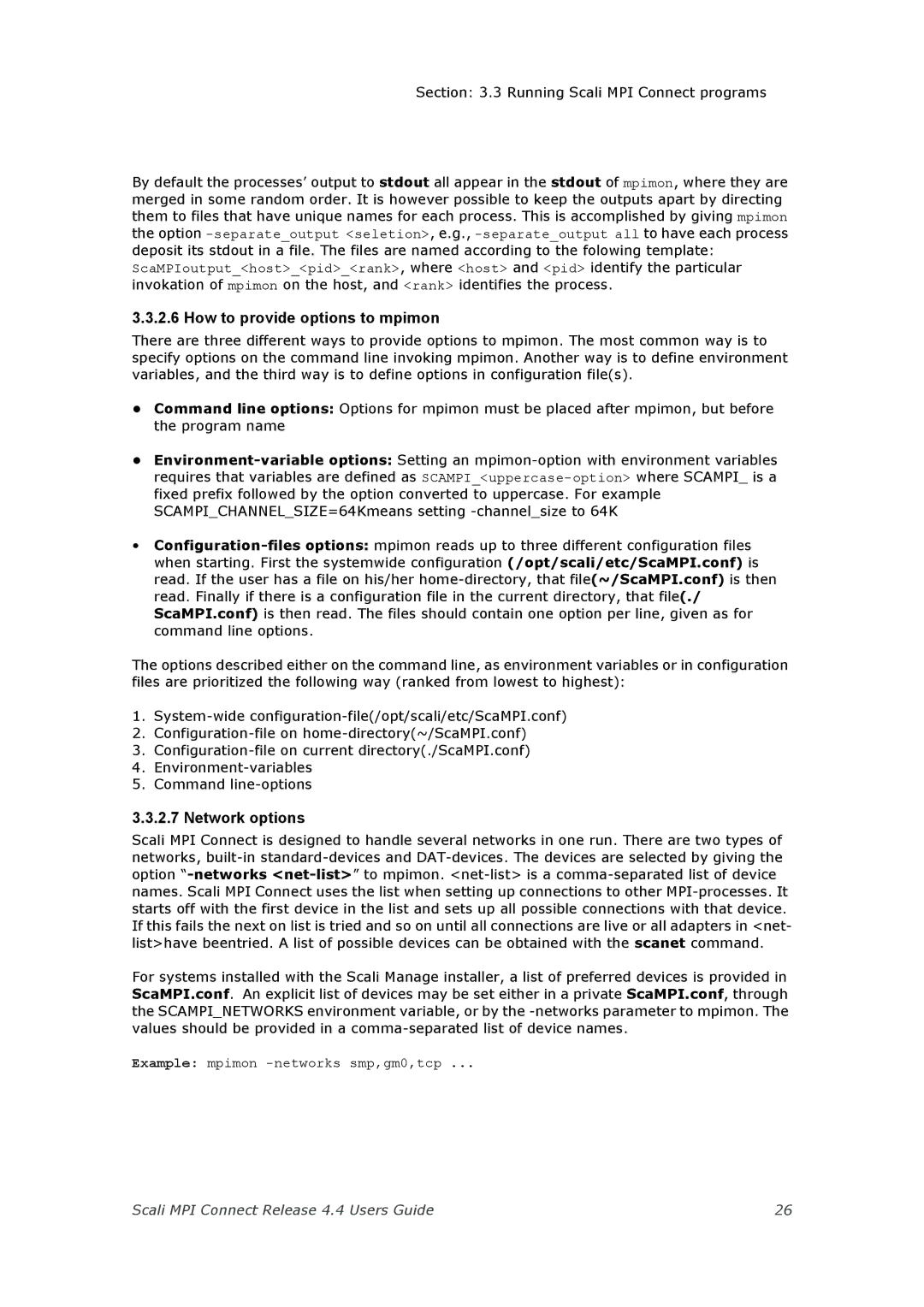Section: 3.3 Running Scali MPI Connect programs
By default the processes’ output to stdout all appear in the stdout of mpimon, where they are merged in some random order. It is however possible to keep the outputs apart by directing them to files that have unique names for each process. This is accomplished by giving mpimon the option -separate_output <seletion>, e.g., -separate_output all to have each process deposit its stdout in a file. The files are named according to the folowing template:
ScaMPIoutput_<host>_<pid>_<rank>, where <host> and <pid> identify the particular invokation of mpimon on the host, and <rank> identifies the process.
3.3.2.6 How to provide options to mpimon
There are three different ways to provide options to mpimon. The most common way is to specify options on the command line invoking mpimon. Another way is to define environment variables, and the third way is to define options in configuration file(s).
•Command line options: Options for mpimon must be placed after mpimon, but before the program name
•Environment-variable options: Setting an mpimon-option with environment variables requires that variables are defined as SCAMPI_<uppercase-option>where SCAMPI_ is a fixed prefix followed by the option converted to uppercase. For example SCAMPI_CHANNEL_SIZE=64Kmeans setting -channel_size to 64K
•Configuration-files options: mpimon reads up to three different configuration files when starting. First the systemwide configuration (/opt/scali/etc/ScaMPI.conf) is read. If the user has a file on his/her home-directory, that file(~/ScaMPI.conf) is then read. Finally if there is a configuration file in the current directory, that file(./ ScaMPI.conf) is then read. The files should contain one option per line, given as for command line options.
The options described either on the command line, as environment variables or in configuration files are prioritized the following way (ranked from lowest to highest):
1.System-wide configuration-file(/opt/scali/etc/ScaMPI.conf)
2.Configuration-file on home-directory(~/ScaMPI.conf)
3.Configuration-file on current directory(./ScaMPI.conf)
4.Environment-variables
5.Command line-options
3.3.2.7 Network options
Scali MPI Connect is designed to handle several networks in one run. There are two types of networks, built-in standard-devices and DAT-devices. The devices are selected by giving the option “-networks<net-list>” to mpimon. <net-list> is a comma-separated list of device names. Scali MPI Connect uses the list when setting up connections to other MPI-processes. It starts off with the first device in the list and sets up all possible connections with that device. If this fails the next on list is tried and so on until all connections are live or all adapters in <net- list>have beentried. A list of possible devices can be obtained with the scanet command.
For systems installed with the Scali Manage installer, a list of preferred devices is provided in ScaMPI.conf. An explicit list of devices may be set either in a private ScaMPI.conf, through the SCAMPI_NETWORKS environment variable, or by the -networks parameter to mpimon. The values should be provided in a comma-separated list of device names.
Example: mpimon -networks smp,gm0,tcp ...
